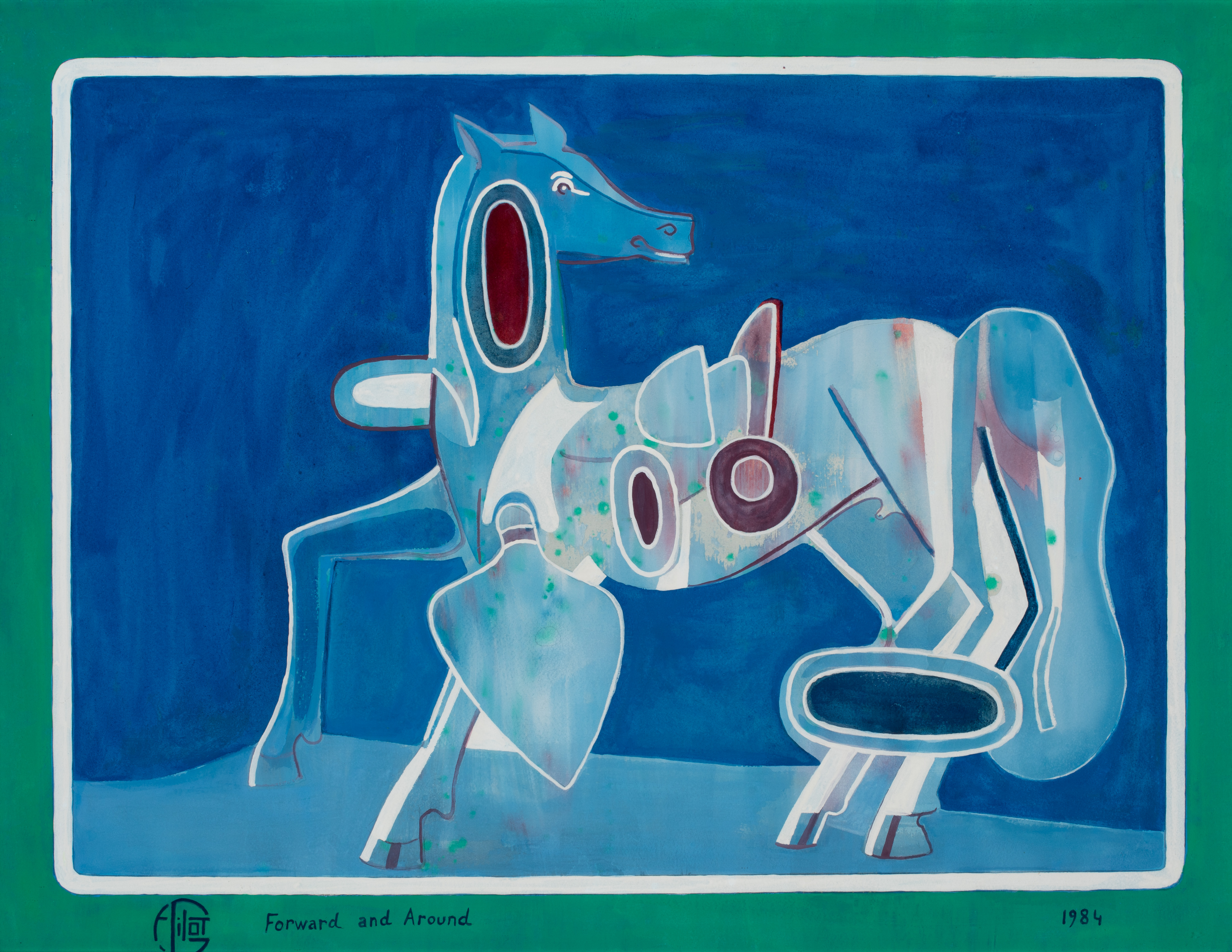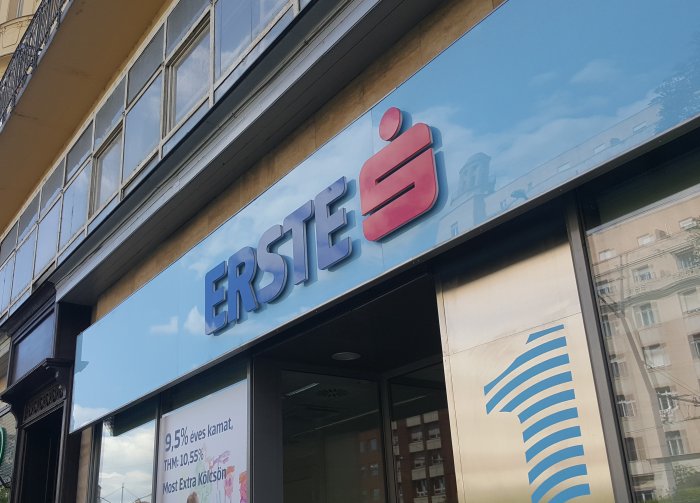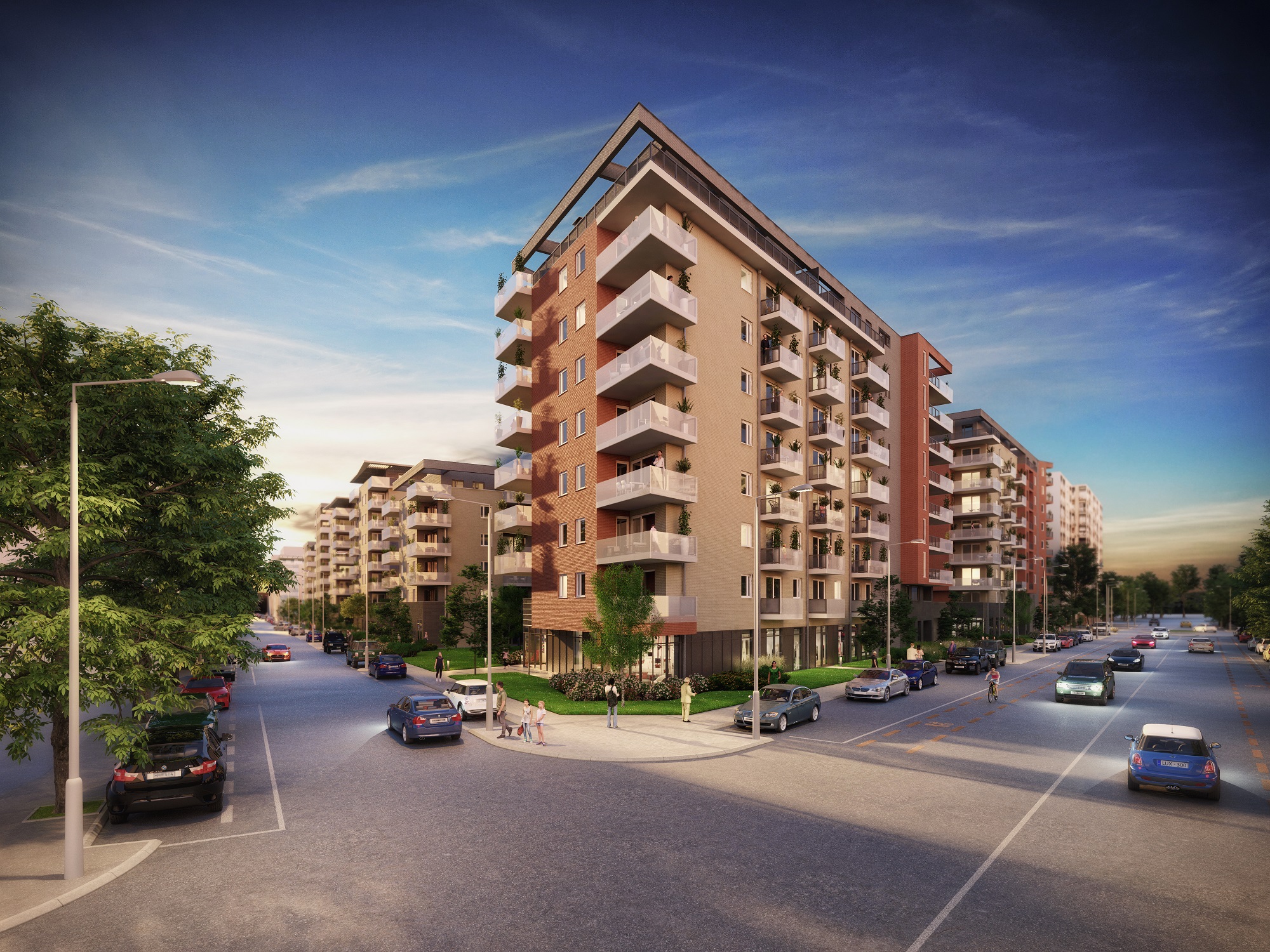Françoise Gilot Exhibition Opens in Country she Loved

Forward and Around, 1984, by Françoise Gilot.
As “Rising Phoenix,” the most comprehensive European exhibition of the work of the artist Françoise Gilot to date, opens at the Műcsarnok Kunsthalle Budapest, David Holzer speaks to the show’s curator, Krisztina Kovács.
Gilot, an only child born into an upper-middle-class family in the Parisian suburb of Neuilly-sur-Seine in 1921, passed away in June this year. Early on, she demonstrated her independent spirit, saying later, “I refused to submit to rules if I did not see they had any meaning.”
She decided to paint full-time after World War II broke out and Paris fell to the Germans. Abandoning her studies at law school and banished from the family home by her father, Gilot entered the atelier of Hungarian surrealist Endre Rozsda. He would become a mentor and lifelong friend and spark her profound love of Hungary.
Born in Mohács in 1913, Rozsda was regarded as a significant talent in Hungary from his first exhibition in 1936. He moved to Paris in 1938 and became intrigued by surrealism. When the Germans occupied Paris, the gay Jewish Rozsda returned to Budapest. Back in Hungary, he embraced surrealism fully. After the brutal suppression of the Hungarian Revolution in 1956, he returned to France, where he lived for the rest of his life.
Gilot met Picasso in a restaurant in Paris in 1943. She was 21, and he was 61. For many years, her extraordinary accomplishments have been somewhat obscured by the simplistic assumption that she was only ever Picasso’s muse.
As Krisztina Kovács tells me, “While she was with Picasso, Gilot’s work did take on some aspects of his style, but she did everything she could to resist the influence.”
This “influence” appears rather sinister. Once, because he thought she wasn’t paying close enough attention to him, Picasso burned Gilot’s cheek with a cigarette.
Ressurection
When Gilot left Picasso in the early 1950s, she had to, as Kovács puts it, “resurrect herself.” This is one of the reasons why Kovács chose “Rising Phoenix” as the title of the Műcsarnok exhibition.
“Gilot worked a lot from symbols,” Kovács explains. “Many times in her oeuvre, she painted phoenixes. One of her artworks is called ‘Rising Phoenix.’ The title of the exhibition also honors the fact that, with her passing, Gilot has ascended to heaven.”
Gilot wasn’t a one-dimensional artist. As the show at the Műcsarnok conclusively demonstrates, she experimented with different styles from the very beginning. A composition from the 1940s shows her trying constructivism.
The exhibition includes examples of Gilot’s art throughout the main periods, themes, and series of her more than eight decades of painting. These include a self-portrait made when she lived with Picasso, a lithograph from her time at the legendary Mourlot studio in Paris, her floating canvases from the 1980s and pieces from her 1990s “Wanderer” series.
For Kovács, who adores Gilot’s work and admires her as a woman, her oeuvre shows “the same mind dealing with different forms. She worked with so many techniques with such professionalism. Throughout her career, she uses ink, monotypes, watercolors and oils. At the Műcsarnok, I wanted to celebrate this constant experimentation. On one of the walls, you can see works from different periods. There are pieces that are really abstract next to painting that’s more symbolic and so on.”
Through “Françoise Gilot: Rising Phoenix,” Kovács is keen to highlight the artist’s remarkable versatility. The author of books on art theory, including on Picasso and her friend Matisse, she published and illustrated volumes of poetry, taught at universities, and made scenery and costume designs for dance performances.
Ultimately, as Kinga Popovics wrote, “Her philosophy as an artist was determined by the versatility of her art [….]. On the subject of her instinctive approach to painting […], she said, ‘I see no difference between the figurative and the abstract. I do not copy after nature what my eyes see, but I express what my heart captures of its colors and shapes.’”
The Hungarian Connection
The exhibition is the latest flowering of Gilot’s strong connection with Hungary, which began when she first set foot in the atelier of Rozsda.
Many years later, he introduced Gilot to Károly Szalóky, owner of the Várfok Galéria at Várfok utca 11, Budapest. Szalóky became a great admirer of Gilot’s work. In May 2000, the Várfok organized her first solo exhibition in Hungary. This was followed by several more. While she was healthy enough to do so, Gilot always attended.
The artist loved Hungary. Her visits to Budapest inspired her to paint the city. “Cityscape III” shows Clark Ádám tér and the Chain Bridge emerging from stacked abstract forms.
In 2021, after she’d stopped painting new work, the Várfok organized a Gilot retrospective together with her daughter Aurelia. Although Gilot was unable to attend, she chose the work she wanted shown.
“Gilot was already a legend In Hungary, but I think the retrospective touched the audience even more,” Kovács told me. “It was a huge success and came at a time when women artists were becoming more respected. On the last day, we had 400 visitors, which is incredible for the Várfok.”
One of these visitors was György Szegő, the director of the Kunsthalle at Műcsarnok. “He really liked the work,” Kovács says, “and we started to talk about a larger exhibition of Gilot’s work at the Kunsthalle with her family. Gilot was delighted. Unfortunately, she passed away. That’s why it’s even more important to honor her with Rising Phoenix.”
“Françoise Gilot: Rising Phoenix” is at the Műcsarnok Kunsthalle Budapest until Feb. 4, 2024. Standard tickets cost HUF 1,600, and concessions with a valid ID HUF 800. The building is open on Wednesdays and from Friday to Sunday from 10 a.m. to 6 p.m. (last entry 5:30 p.m.), on Thursdays from noon to 8 p.m. (last entry 7:30 p.m.) and is closed on Mondays and Tuesdays. If you plan to see the show over the holidays, the Műcsarnok will be closed on Dec. 24-26 and Dec. 31-Jan. 1.
This article was first published in the Budapest Business Journal print issue of December 15, 2023.
SUPPORT THE BUDAPEST BUSINESS JOURNAL
Producing journalism that is worthy of the name is a costly business. For 27 years, the publishers, editors and reporters of the Budapest Business Journal have striven to bring you business news that works, information that you can trust, that is factual, accurate and presented without fear or favor.
Newspaper organizations across the globe have struggled to find a business model that allows them to continue to excel, without compromising their ability to perform. Most recently, some have experimented with the idea of involving their most important stakeholders, their readers.
We would like to offer that same opportunity to our readers. We would like to invite you to help us deliver the quality business journalism you require. Hit our Support the BBJ button and you can choose the how much and how often you send us your contributions.








